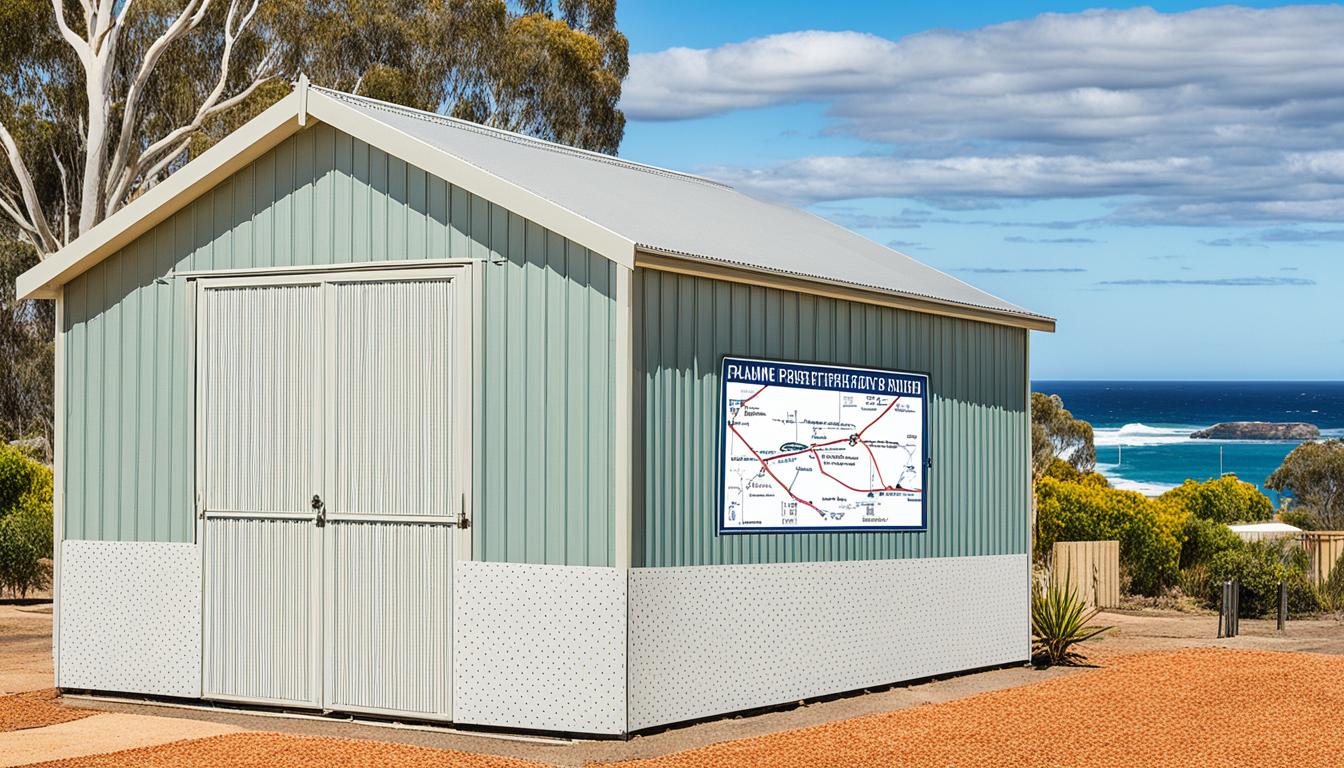Thinking about adding a shed in your backyard? Not sure if you need council approval?
Lockyer Sheds creates custom sheds, workshops, and garages in various Australian locations. Many people worry about needing special permits for their shed. For smaller to medium-sized sheds, you usually don’t need any extra paperwork.
But, it’s very important to check your local council’s rules. Building without the right permission can lead to big fines. Or, you might have to take down your shed if there’s a complaint or when you sell your home.
Understanding Planning Permits for Sheds
Building a shed or outbuilding might require a planning permit from your council. This depends on its size, height, where it’s placed, and what it’s used for. Knowing your council’s rules and guidelines minimizes issues with zoning and approvals.
When is a Planning Permit Required?
Smaller backyard sheds might not need a planning permit. But, larger or more specialized structures might. Here’s when you might need that permit:
- If the shed is over 100 square meters, you likely need approval.
- If it’s not for living in, and serves your main dwelling, it’s often exempt.
- Larger outbuildings not used for living space may have a simpler approval process.
Council Regulations and Guidelines
Your council will have specific shed planning guidelines and zoning requirements. These help decide if you need a shed construction permit. Look out for these factors:
- Generally, a shed under 10m² doesn’t need a permit in Victoria.
- A permit might be needed if the shed is taller than 3m (or 2.4m near a boundary).
- If the shed is attached to something else, you usually need a permit.
Always check with your Council Planning Department first. This ensures your shed project suits the local storage shed compliance rules.
Outbuildings and Planning Permits
In Australia, outbuilding permits have specific rules, but some come with exceptions and easy ways to apply. The rules from the council can differ depending on where you live. Knowing what’s needed for your backyard shed or outbuilding is key.
Exemptions for Small Outbuildings
A storage shed or garage under 100 square meters might not need a planning permit. But, it can’t be for living in and should go with a home on the property.
Streamlined Application Process
Outbuildings over 100 square meters could qualify for a faster permit process. It has to be for things like storage, not to live in, and be closely linked to the main home. There also must be plans for bushfire protection.
So, you’d also need to present a Bushfire Management Plan. This plan should cover how you’ll protect the building from fires. It includes where the building is, areas kept safe from fire, and separation needs.
Shed Permit Requirements
The rules for getting a residential shed permit change based on the shed’s size, height, and use. Sheds above certain sizes or specific circumstances must have a building permit. In some places, you might also need a planning permit. This is true for areas with council regulations that control the building of sheds.
Building Permit vs. Planning Permit
A building permit is needed for sheds over 10m² in area or taller than 3m. If it’s closer than 1m to a boundary, the height limit is 2.4m. This ensures your shed is safe and follows the National Construction Code. On the flip side, for the planning permit, it depends on what the local council regulations and your property’s zoning say.
Submitting Your Shed Application
To get a shed permit, you’ll need to submit important papers. These include title documents, a site plan, and shed details (like materials and height). You might also need to show structural details, which could mean needing an engineer. If you’re the builder and the shed costs more than $16,000, you should get an Owner Builder certificate.
If the work costs over $10,000, you must have a contract with a registered builder.
Engaging a Registered Builder
- For sheds bigger than 36m², you typically have to hire a licensed builder, designer, and building surveyor. But, this rule doesn’t apply to prefabricated farm sheds under 200m².
- The building surveyor checks the shed’s design. They make sure it follows the National Construction Code before authorization.
- In city areas, larger sheds might have to manage stormwater properly. This is according to the Director’s Determination on Categories of Plumbing Work.
- In dangerous zones, like places prone to bushfires, outbuilding permits are special. They might have rules about how far the shed should be from living places.
Bushfire Considerations for Outbuildings
Thinking of building a shed or garage in a bushfire area? It’s key to look at the fire risk and add safety features. Councils check things like how risky the fire danger is, the shed’s location, and if there’s enough space between buildings and trees. They also look at if you meet safety distances from fire.
Bushfire Risk Assessment
Before you get permission to build, do a detailed fire risk check. This looks at where the fire might come from and if there’s stuff around that can burn easily. If your shed will have things that can catch fire fast, it needs to be far away from houses to lower the danger.
Bushfire Management Plan
If the fire check shows a big risk and your building is large, you might need a Bushfire Management Plan (BMP) for your application. This plan describes how you’ll protect your shed from fires. It might include keeping an open space around it, making sure trees nearby aren’t a danger, and how far it should be from other buildings. If you might not need as much open space if neighbors take steps to stop fires on their land, the council will think about this.

